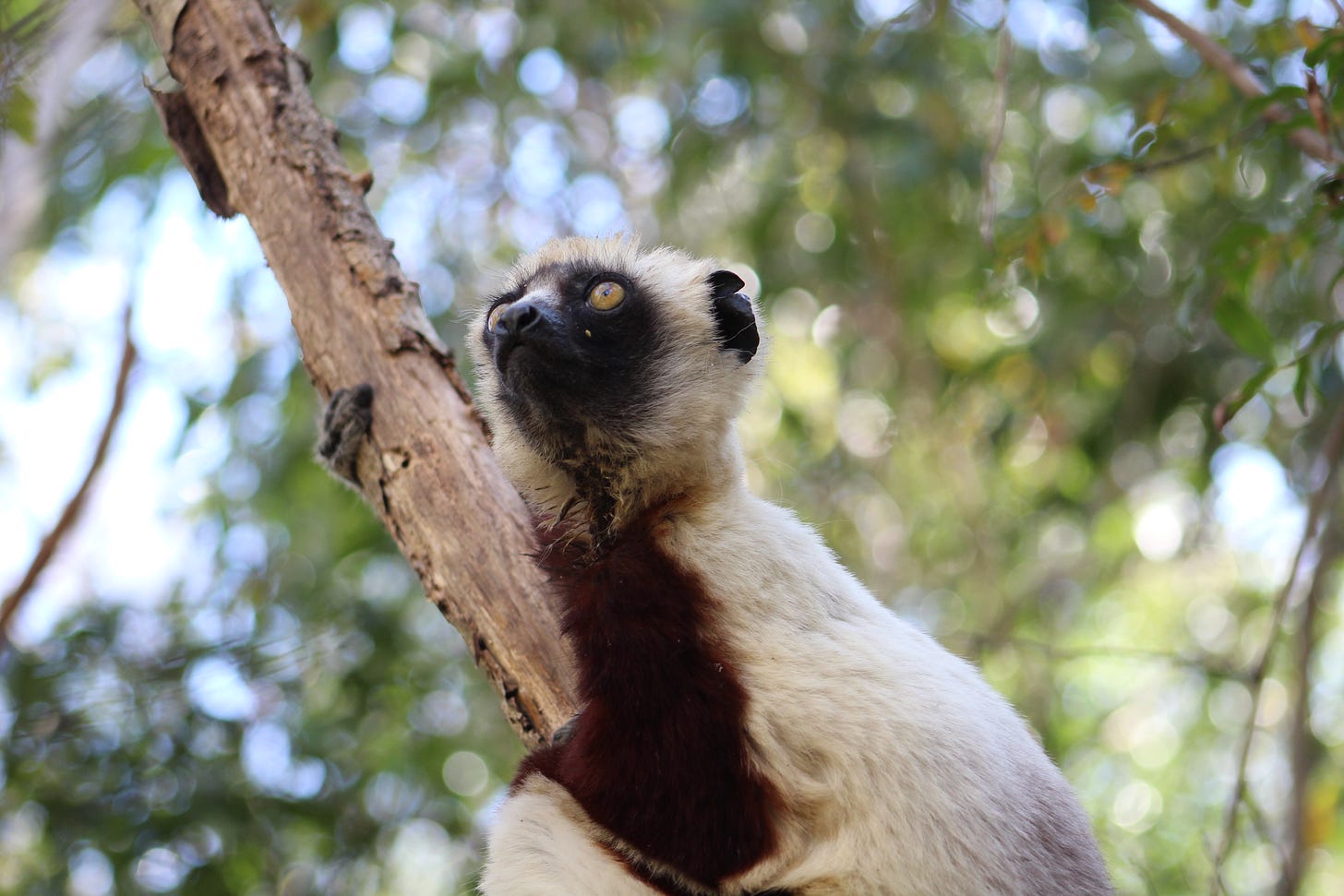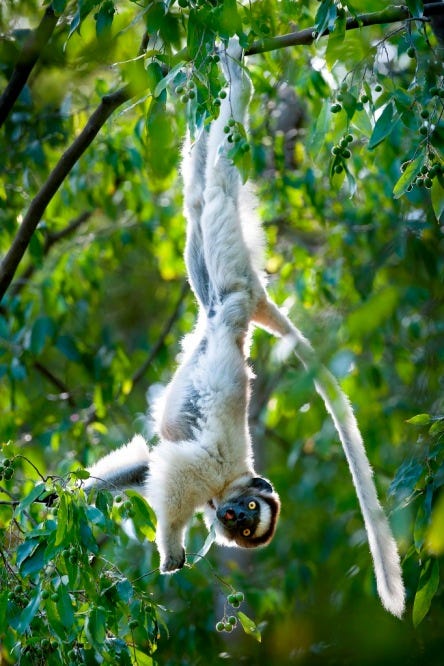Welcome to a new series where I introduce you to a primate family, genus or specific species, Primate Profiles! In this series, you will meet a new primate every issue and learn a few interesting facts about them.
Let’s meet our first primate genus, Propithecus, or sifaka! It would be rude to not start this series with my study species and arguably the coolest lemur/primate species (but I guess I am a bit biased…).
So, let’s get started and learn about the sifaka genus. Here are five facts about these leaping lemurs, that you may not know.
1. There are NINE species!
That’s right there are nine species of Sifaka within the Propithecus genus, all endemic to the island of Madagascar, meaning they aren’t found anywhere else in the world. These nine species include; Coquerel’s sifaka (Propithecus coquereli), Verreaux’s sifaka (Propithecus verreauxi), Decken’s sifaka (Propithecus deckenii), Crowned sifaka (Propithecus coronatus), Tattersall’s sifaka (Propithecus tattersalli), Diademed sifaka (Propithecus diadema), Milne-Edwards’ sifaka (Propithecus edwardsi), Silky sifaka (Propithecus candidus) and finally Perrier’s sifaka (Propithecus perrieri). As you can see from the images below some of the species seem very similar whereas others look dramatically different!
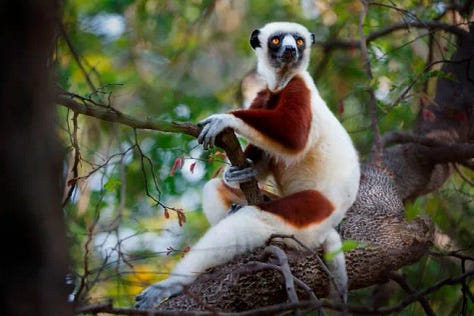
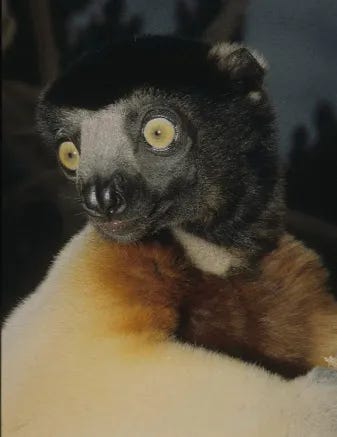
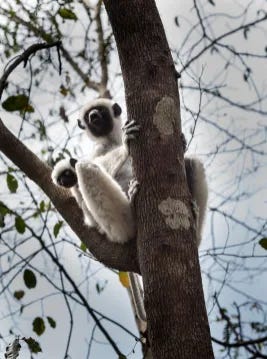

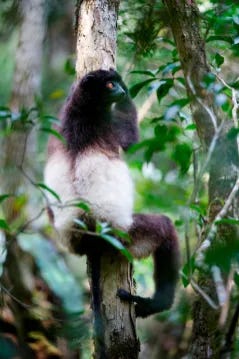


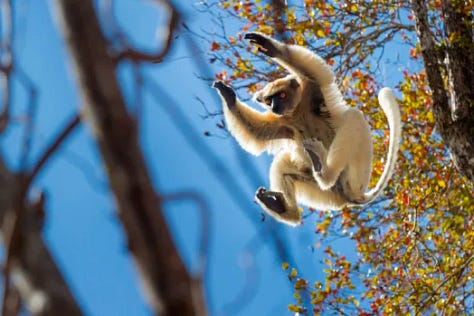

2. All species are Critically Endangered.
All nine species are currently listed on the IUCN Redlist as Critically Endangered, meaning all species are currently at the highest risk of extinction in the wild, and all have declining populations. All nine species face very similar threats, including deforestation, habitat fragmentation and pressures from unsustainable hunting. Due to this, all species are given the highest conservation protection, including all species being listed on CITES Appendix I, meaning the trade in specimens is permitted only in exceptional circumstances.
Interestingly some species, such as the Coquerel’s sifaka are protected by local Malagasy traditions or taboos which prohibit the hunting of the species. The taboo that prohibits the hunting of the Coquerel’s sifaka derives from a legend of a sifaka saving the life of a boy who has fallen out of a tree.
“A little boy heads into the forest to find some honey. He spots a hive in a high tree and he ascends it. As he’s about to reach in to collect the honey, he is immediately attacked by bees. The surprise causes the boy to lose his grip on the tree branch, and he falls to what is almost certainly his death. As the boy plummets toward the earth, a large lemur suddenly appears, swoops in and catches the boy, saving his life. Ever since that day, lemurs became sacred to the Malagasy and it is said that anyone who kills one shall have extreme misfortune.”
3. Shee-faak!
The name sifaka is a Malagasy name that derives from the characteristic threat behaviour that the species performs. Individuals will jerk their heads rapidly backwards and issue a hiss-like “Shee-faak” sound. This call is very distinctive and used to warn fellow group members of a potential predator, while also being heard by other sifaka groups for several kilometres.
4. Only two species in captivity
Currently, there are only two species of sifaka, the Crowned sifaka and the Coquerel’s sifaka, that are held in captivity globally. Zoos that house these species, such as Chester Zoo in the UK, and the San Diego Zoo in California play their part in the conservation of the species, with both collections being part of global breeding programmes for the species which aim to ultimately help save guard the species from future extinction.
5. Leaping Lemurs
As well as the distinctive noise they make sifaka are well known for their characteristic movement and locomotion, with the family being described as ‘vertical clingers and leapers’. At rest, sifaka can be seen clinging to vertical tree trunks, but when moving through the trees the species can be seen to leap.
Sometimes the species can be seen to often descend to the ground and perform a ‘dancing’ behaviour where they hop, leap and jump bipedally across the ground. This behaviour is very common among the small sifaka species, such as the Verreaux’s sifaka. Within Berenty Private Reserve Verreaux’s can be seen performing this behaviour daily and is a highlight for many tourists visiting the reserve.

I hope you enjoyed the first issue of Primate Profiles and learning a little bit about these incredible species, they are easily one of my favourite genera of primates (I’m sure you can now see why!) and I love that my job allows me to watch them for hours a day!




